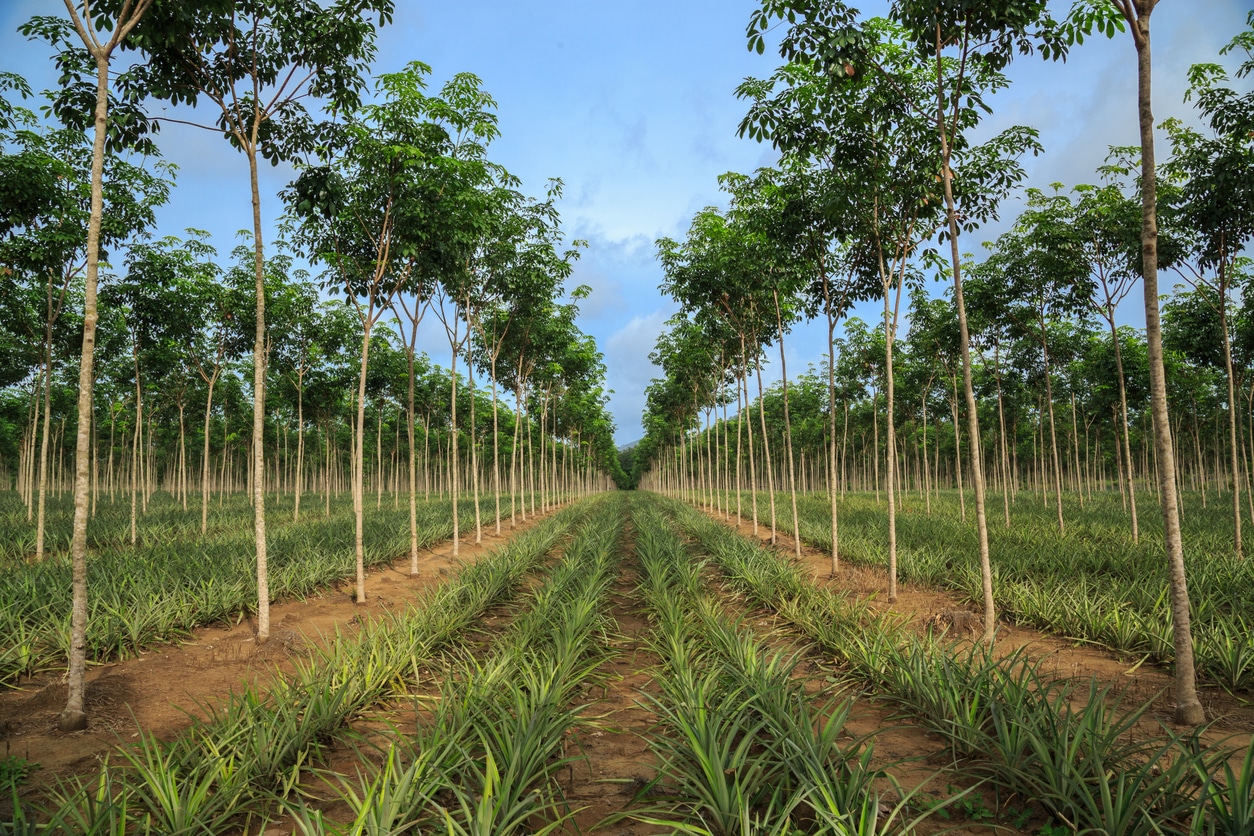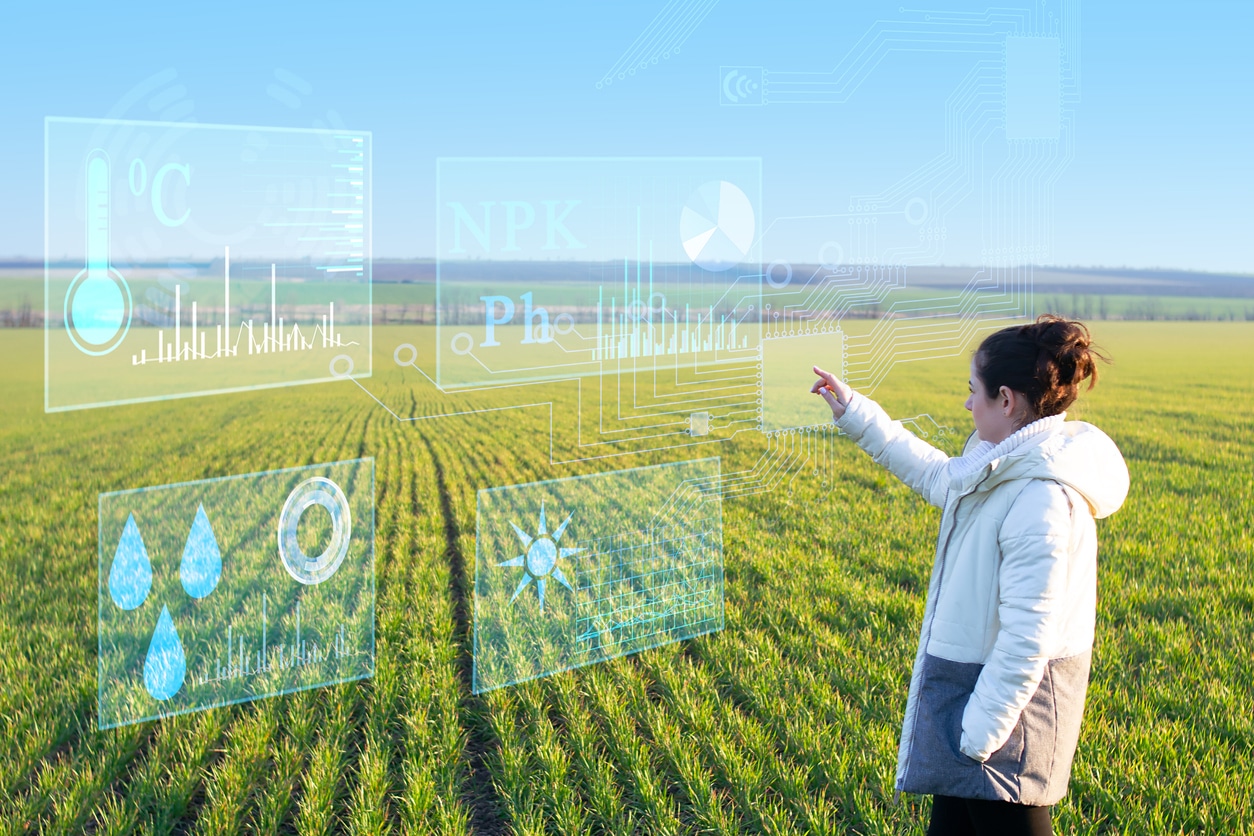
What Role Does Agroforestry Play in Sustainable Farming Practices?
Agroforestry is the practice of including shrubs and trees on a farm that raises crops or animals. There are five types of agroforestry. Forest farming involves growing crops under trees, while alley cropping means planting rows of trees between crops. Silvopasture lets livestock graze in forests. Windbreaks are rows of trees planted to block wind, while riparian forest buffers protect streams from farming runoff. Here’s how agroforestry impacts sustainable farming.
Improving Soil Quality
Agroforestry benefits the soil in three main ways:
1. Increasing Permeability
Tree roots make the soil more permeable by breaking up hard layers of dirt. This action frees up nutrients from deeper underground, allowing plants to absorb them. It makes it easier for air and water to penetrate the soil thus reducing runoff, which might otherwise flow into streams. Greater permeability also means worms can move more easily through the soil, fertilizing it as they go.
2. Adding Nutrients
Most modern farms grow one type of crop at a time, a practice called monocropping or monoculture. This strategy has its roots in the rise of modern machinery like planters, harvesters and sprayers. These vehicles drive over a field and perform one repetitive action like dropping seeds or bundling hay, improving productivity on large farms and allowing growers to feed more people.
While monocropping is great for growing and harvesting large amounts of food, it also has drawbacks. Every type of plant specializes in removing or adding certain nutrients to the soil. If you grow only one crop species in an area, the soil will very quickly become uniform, having high concentrations of certain minerals and low concentrations of others. This makes it harder to keep growing crops in the same field over time.
Agroforestry naturally increases the amount of nutrients in the soil, helping plants grow. For example, many trees capture large amounts of nitrogen from the air and store it for later. When they drop their leaves, the decomposing leaves release nitrogen into the ground. Planting diverse tree species helps make the earth more nutritionally balanced.
3. Reducing Erosion
Planting trees among crops also lowers the risk of erosion. Erosion is a huge issue in farming because, as you lose soil, you lose nutrients. Loose dust can blow into waterways and clog them up — this process kills fish and other aquatic species. Simultaneously, as fields lose their topsoil, they’re more prone to catastrophic flooding.
Tree roots hold down the earth and prevent it from blowing away, as do rows of trees specifically planted as windbreaks. Fallen leaves decompose and become new layers of topsoil. So, at the same time trees prevent soil loss, they also actively create new soil to replace any already blown away. Trees can help restore depleted fields and make them suitable for agriculture again.
Providing Better Habitat
Around 35% of global food crops depend on pollinators for reproduction. In other words, one-third of the food on your plate owes its existence to animals like bats, moths, bees and butterflies. These species need shelter from the elements, with many depending on trees. Agroforestry provides a suitable habitat for pollinators to live in.
Converting natural landscapes into farms has reduced the numbers of up to 60-75% of bird species. Planting trees among crops supports birds, giving them a place to rest, nest and hunt. Having more birds around can reduce the number of crop-eating insects living nearby. This, in turn, means farmers can use less pesticide on their crops.
Using less pesticide lowers the risk of pesticide resistance, which is when insects evolve to become immune to a specific poison. Pesticide-resistant bugs are much harder to kill and can destroy a vast portion of the food supply.
Spraying less pesticide is good for beneficial insects like bees and other pollinators. It also reduces the risk of pesticides contaminating nearby water sources.
Reducing Water Use and Pollution
With climate change exacerbating droughts, and less than 1% of global water available for human use, conserving water has become more important than ever. Trees shade crops from the harsh sun, reducing evaporation. They keep livestock cooler in the heat of the day so the animals don’t need to drink as much. In Zambia, the leaves of Musangu trees also offer shade for farmers during the planting season, which is the hottest time of year.
Riparian forest buffers — rows of trees or shrubs forming a barrier between crops and streams — protect water against pollution. The pesticides, herbicides, animal manure and fertilizer from farms can all be toxic, if they enter waterways. These substances find their way into nearby streams when it rains or when farmers water their fields. Planting a barrier row means trees or shrubs will absorb the toxins or physically block them from getting in the water.
Giving Farmers Security
One of the biggest benefits of agroforestry is it gives farmers more stability. There are several ways it offers agricultural security.
Improving Plant Survival Rates
When you grow several types of crops at the same time, there’s a greater chance at least some of them will survive the season. For example, a severe flood may kill off the year’s coffee crop, but the cacao trees next to it could weather the storm just fine. A plague of grasshoppers might decimate a cornfield, but leave the plum trees untouched.
Providing a Diverse Diet
Growing multiple crop species gives farmers greater access to healthy food. Having a diverse supply of foods to choose from is especially important for subsistence farmers, who grow crops to feed their families.
Offering Financial Security
Agroforestry also helps growers navigate economic ups and downs. Crop prices fluctuate from year to year, so having several products to sell improves the odds of making a profit. If the market price of pecans is very low one season, farmers still have their mushroom and tomato crops to make up the difference.
A Growing Movement
Agroforestry is gaining ground in the sustainable farming sphere. By reducing pollution, protecting wildlife, improving the soil and giving farmers a better standard of living, planting trees next to crops has become — quite literally — a natural course of action. As the climate changes and we look for new ways to support the growing population, agroforestry will become indispensable.




Post a comment